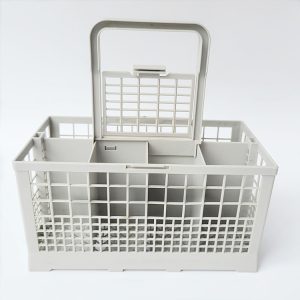Injection Molding: What It Is, How It Works, Who Is It For?
What It Is Injection Molding?
Injection molding – a term that manufacturing industries heavily rely on, often operating behind the scenes. But what is it exactly and why is it critical? In simple terms, it’s a manufacturing process for producing parts in large volume. Material, usually thermoplastic, is fed into a heated barrel, mixed, and injected into a mold, where it cools and hardens to the configuration of the cavity. It’s a quick process with a high production rate, making it a favored choice for manufacturing companies.
How Injection Molding Works?
Now let’s delve into the step-by-step process of injection molding:
Clamping: Before the injection of the material, the two halves of the mold must be securely closed by the clamping unit. These molds are then secured under pressure to the injection molding machine.

Injection: The plastic material, stored in a hopper, is fed into the injection unit where it’s heated until it reaches a molten state. It’s then injected into the mold with the help of a screw and powerful hydraulics.
Cooling and Solidification: The molten plastic starts cooling the moment it makes contact with the interior mold surfaces. It then solidifies and takes the shape of the desired part.
Ejection: The ejection system then pushes the cooled part out of the mold, going through a resetting process for the next product.
Types of Materials Used in Injection Molding
The part characteristics and the specific application heavily dictate the choice of material used. Most commonly, we see various thermoplastics such as Polypropylene, Polyethylene, and ABS (Acrylonitrile Butadiene Styrene), being used. However, in more demanding scenarios, many prefer thermosets like Epoxy and Phenolic or elastomers like rubber and silicone.
Factors to Consider When Choosing an Injection Molding Machine
Choosing an injection molding machine isn’t a one-size-fits-all situation. From the type of material being used and required production speed to energy efficiency and the intricacies of the part being molded, these factors heavily influence the selection of an injection molding machine.
Different Types of Molds Used in Injection Molding
The mold used in the process is pivotal. Various molds are used, such as two-plate molds, three-plate molds, runnerless molds, and hot runner molds, and more, depending on the requirement and complexity of the designed part.
Benefits and Advantages of Injection Molding
Injection molding comes with several benefits – high production speed, minimal waste, ability to use a broad array of materials, capacity for molding intricate and detailed parts, thus reducing the need for post-production work.
Applications of Injection Molding in Various Industries
It’s commonly embraced in industries like automotive, medical, consumer goods, and more. The versatility, speed, cost-effectiveness, and the plasticity of materials make injection molding a go-to choice across industries.
Cost Analysis of Injection Molding
Although the initial setup for injection molding can be costly, once in operation, the cost per unit during production is exceedingly low, making it cost-effective for large scale manufacturing.
Tips for Maximizing Efficiency and Quality in Injection Molding
To maintain efficiency and quality, always optimize the design for the injection molding process, select high-quality materials, carry out regular machine maintenance, and train staff on best practices.
Conclusion: Is Injection Molding the Right Choice for Your Project?
The final consideration is if injection molding is the right choice for your project. This largely depends on various factors like budget constraints, design complexity, quantity, and timeline. It’s undoubtedly a superior choice for the high-volume production of complex parts, but may not be a cost-effective solution for low-volume, simple parts.
Case Study:Producing a Dishwasher PP Plastic Basket
A practical real-life application of injection molding can be seen in the manufacturing of dishwasher baskets. These baskets are commonly made from polypropylene (PP) because of its resilience to heat, chemicals, and fatigue – properties that align with the intense environment experienced inside a dishwasher.
The production journey of a dishwasher basket begins with the creation of a detailed, precision-crafted mold, designed specifically to mirror the final product’s intricate lattice design, handle, and other functionalities.

The PP material, resistant to the high temperatures and constant moisture inside dishwashers, is then fed into an injection molding machine’s heated chamber. It is melted into a liquid state and then injected into the pre-made mold under high pressure.
The cooling phase begins immediately after the injection, where the liquefied PP material starts to solidify within the mold, taking on the form of our dishwasher basket. Once the cooling process is complete, and the basket has hardened into its final shape, it is carefully ejected from the mold.
This basket, with its detailed design and firm structure, demonstrates the precision and efficiency of injection molding. It is then ready to be installed in a dishwasher, adding value to consumers’ lives by effectively cleaning and storing dishware.
We understand the complexities and nuances associated with injection molding, so if you still have any questions after reading this article or want to understand a particular aspect deeper, don’t hesitate to get in touch with us. Our expert team at Rayleap Plastic Inc. is always ready to assist with any queries and provide professional advice. We firmly believe that a true partnership extends well beyond a simple transaction – our goal is to walk the path to success with you, supporting and collaborating every step of the way.
Whether you’re ready to dive into the world of injection molding or simply want to learn more about the process, your questions are welcome. We are firm believers in the power of the knowledge exchange to drive industry innovation and progress.
Please submit your queries or requests through the contact methods below. We are eager to hear your thoughts and dedicated to meeting your needs. Most importantly, let’s tackle any potential challenges together and achieve excellence in the realm of injection molding.